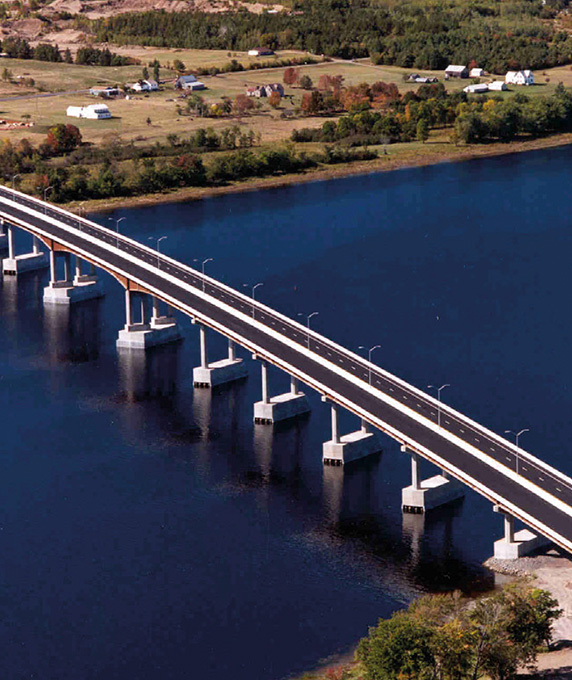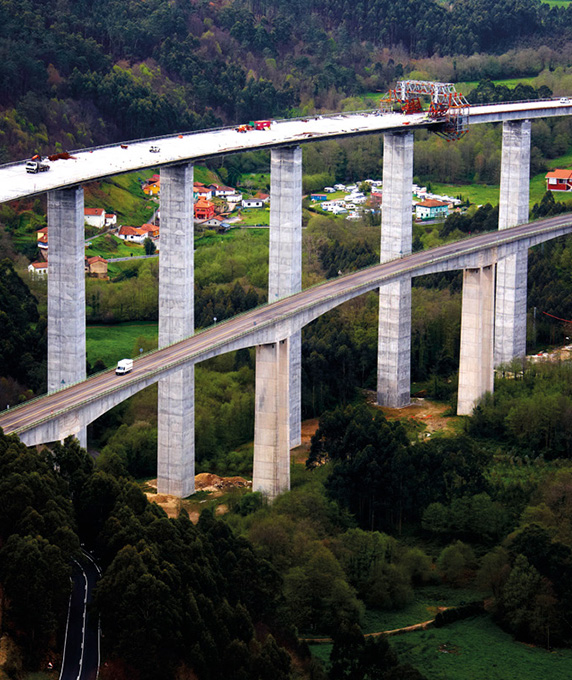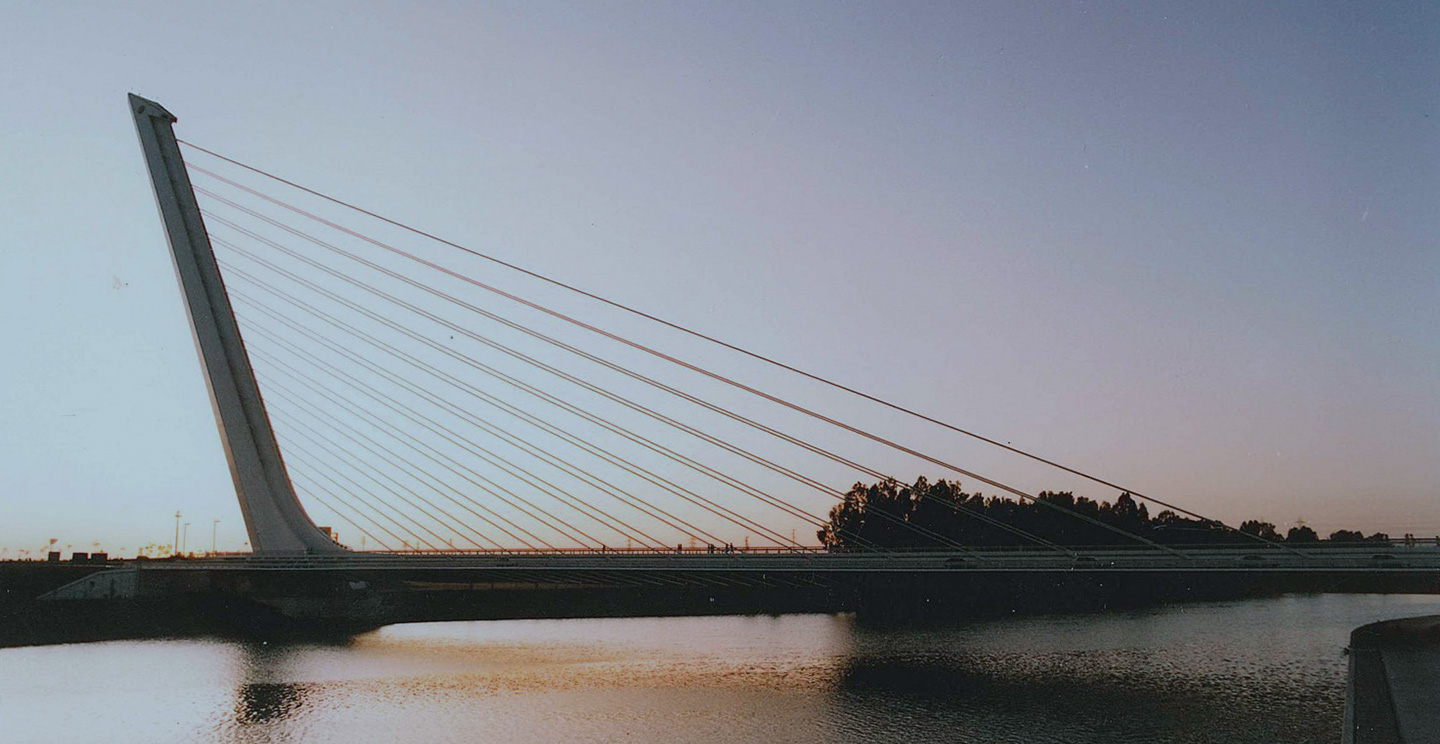
Type of work
Bridges
Alamillo Bridge
Spain
Description
The Alamillo Bridge, designed by the architect Santiago Calatrava is in Seville, Andalusia.
The bridge was constructed to provide access to the Isla de la Cartuja, where Expo 92 was held. Here we may currently find the Isla Mágica park and the Cartuja Monastery from which the name of the Island derives.
The Alamillo Bridge does not have any retaining stay cables, which makes it the first stayed bridge without stay cables that receive the forces from one side of the tower with other stay cables on the other side.
The operating principle is that of a balance for which equilibrium is achieved by the 140-metre high pylon collapse mode at a 48º angle with the horizontal. The pylon foundation consists of fifty-four 2-metre diameter piles that are 48 metres long.
The deck is formed by a hexagonal central metal caisson, 3.40 metres edge height and variable width, containing the laterally-embedded ribs that support the reinforced concrete slab that forms the two 3-lane roadways for the bridge. Pedestrian traffic is via the central reservation on the central caisson.
Deck support is resolved with a double central stay cable system consisting of thirteen pairs of parallel stay cables in fan configuration.
Thanks to this project carried out by FCC, the basin was crossed without any form of intermediate support, the right bank was integrated into Seville and a large surface area of water was produced without any obstacles, attaining a 200-metre span that enters the technical domain of cable-stayed bridges.
The mast to which the stay cables are anchored is a composite concrete and steel structure. The transversal section is variable with a circular four-metre diameter up to elevation 76. Mast inclination permits stay-cable balance without using retention cables.
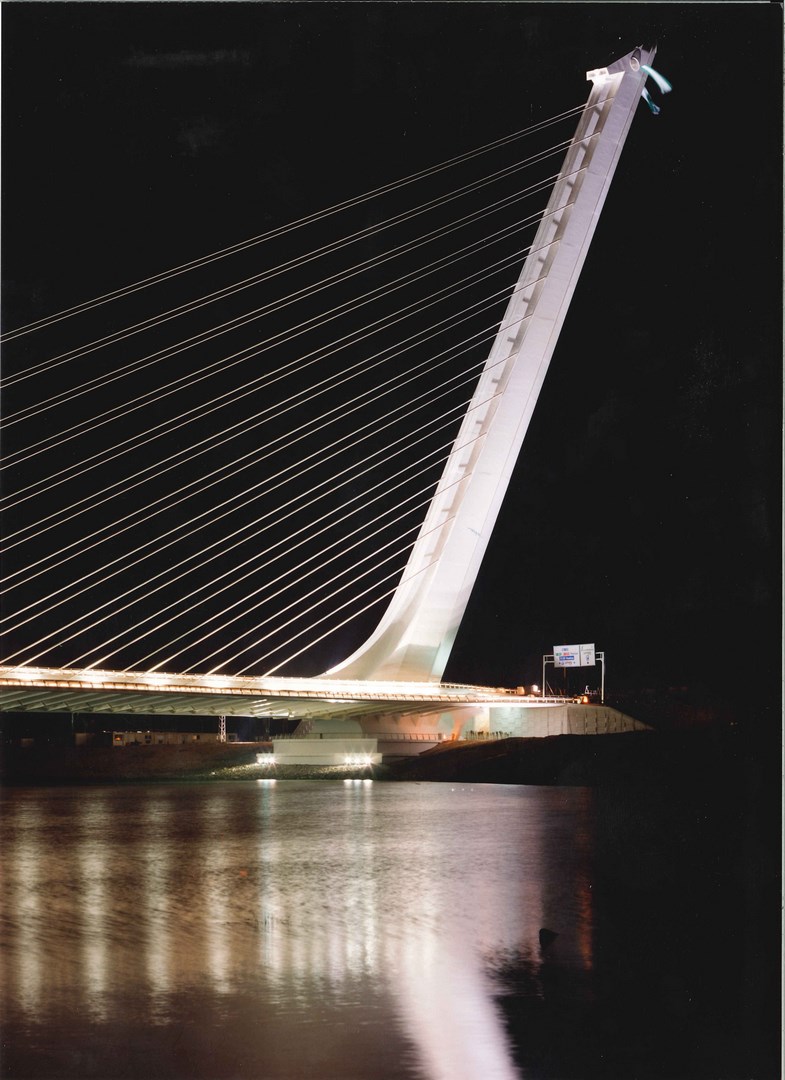
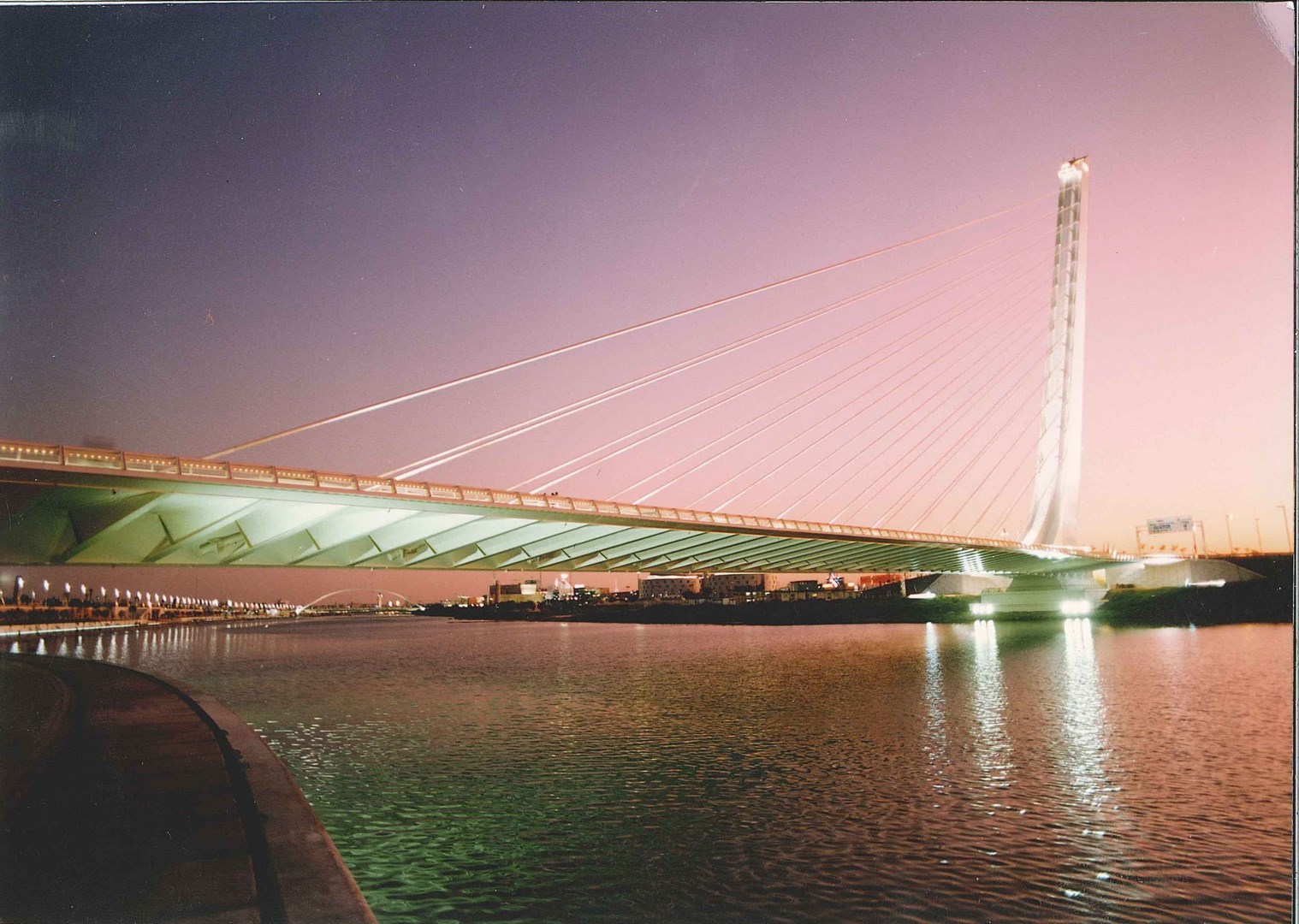
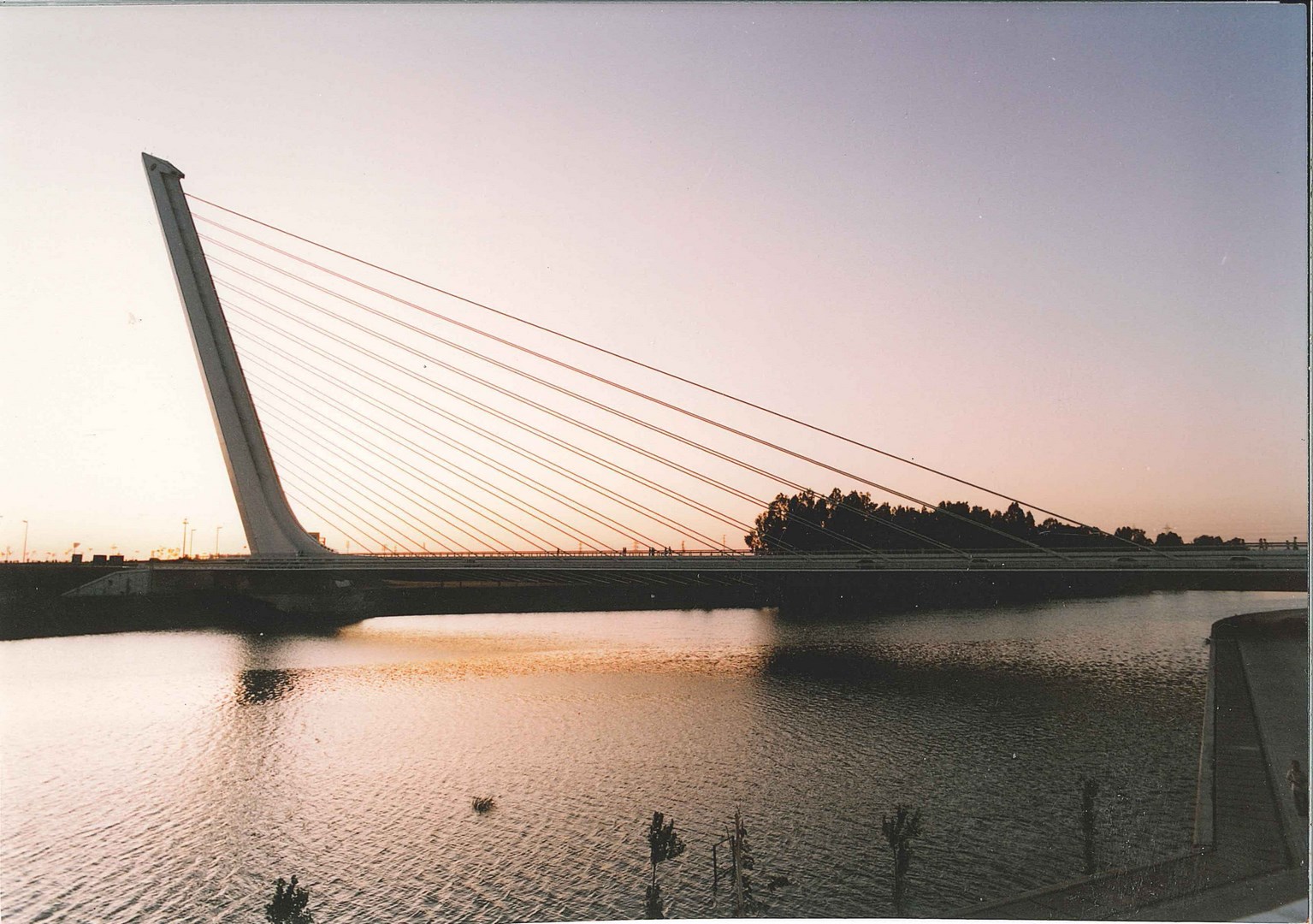
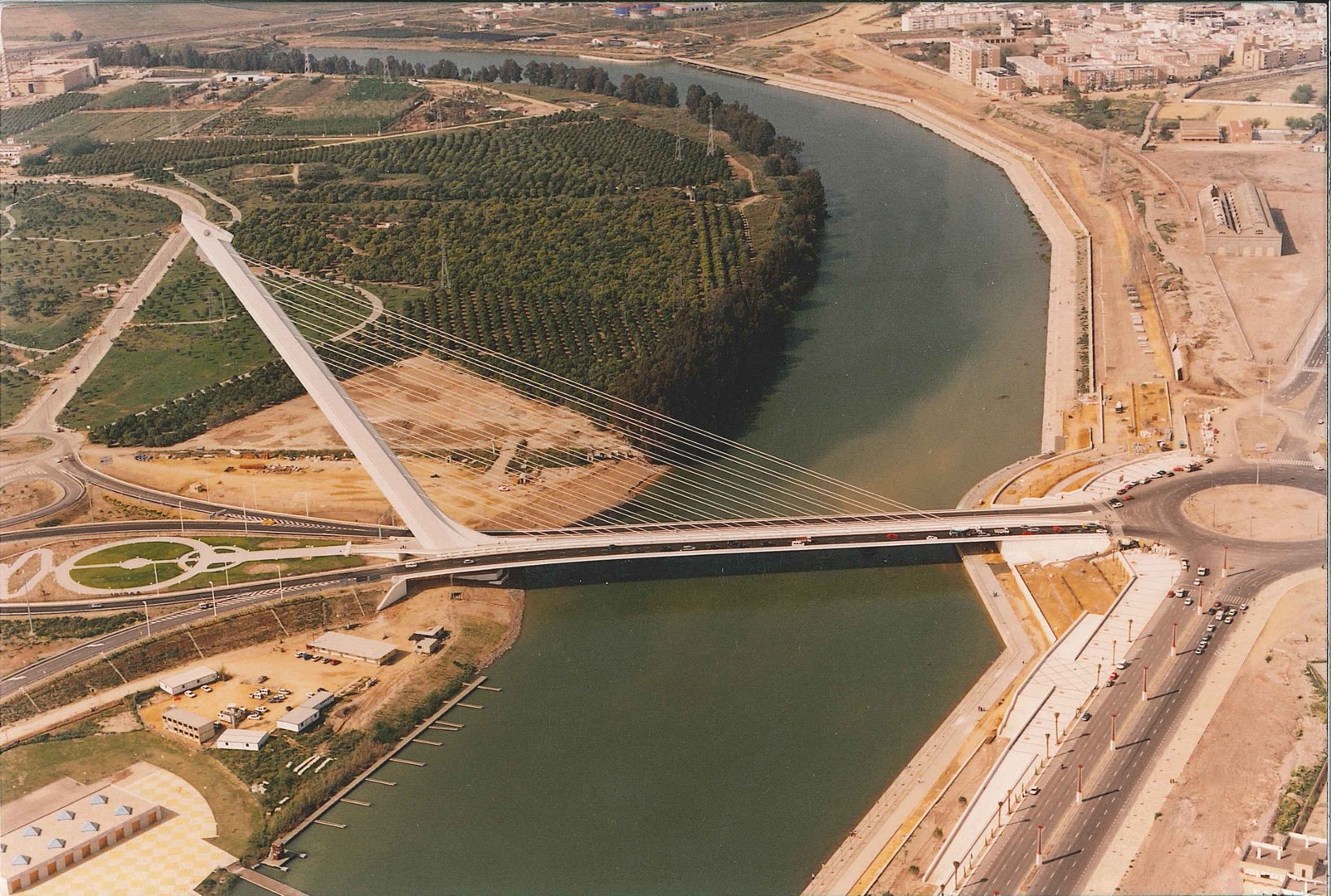
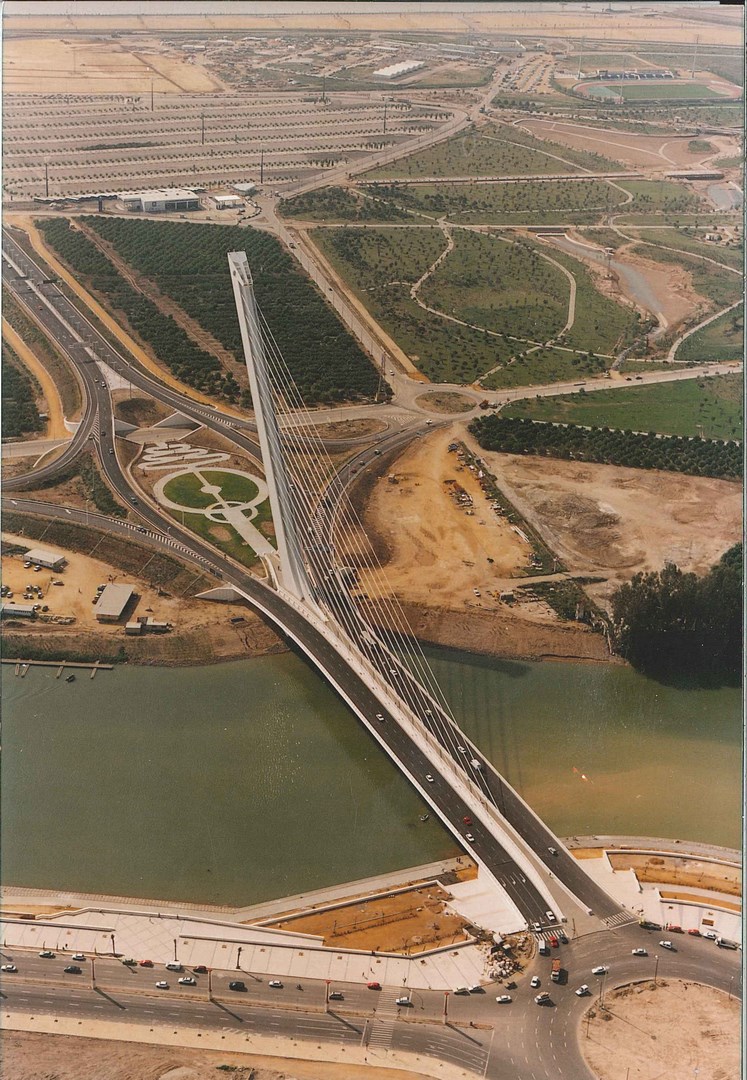
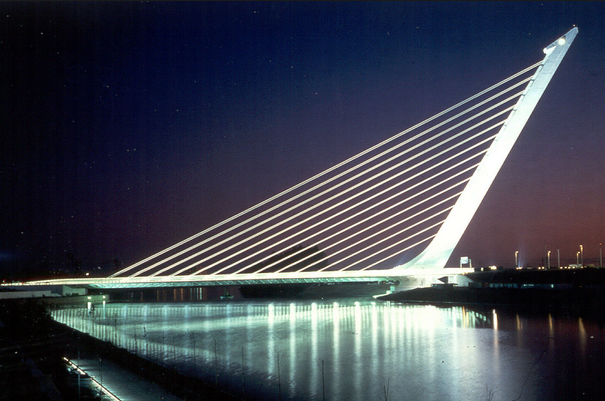
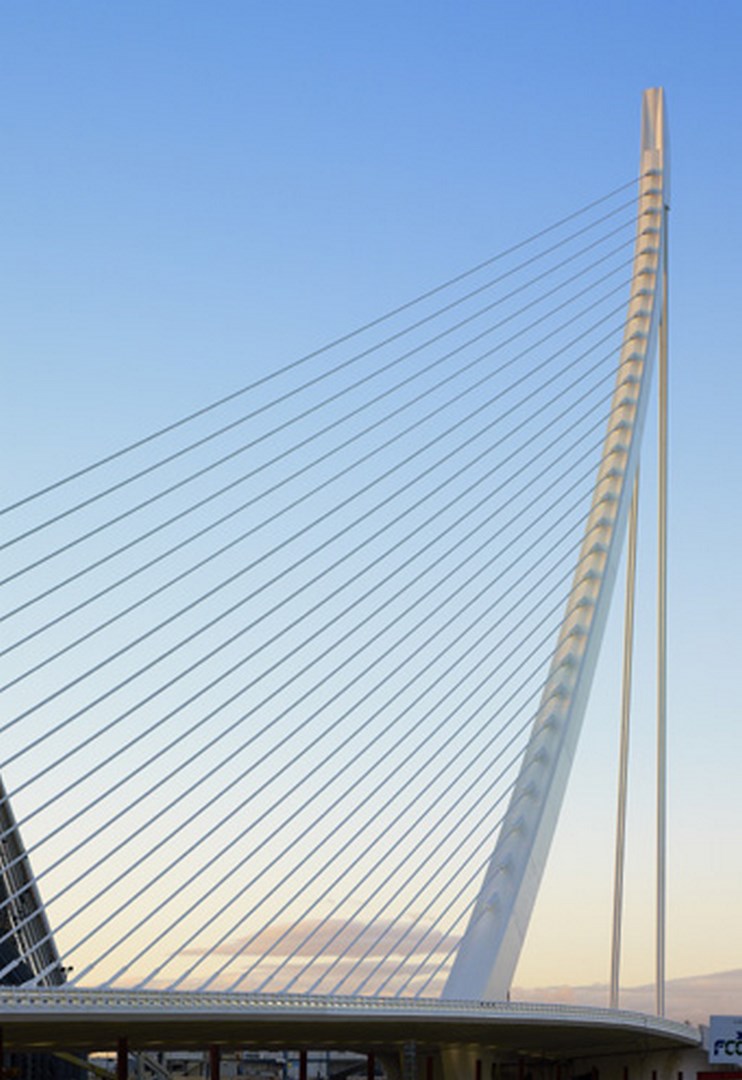
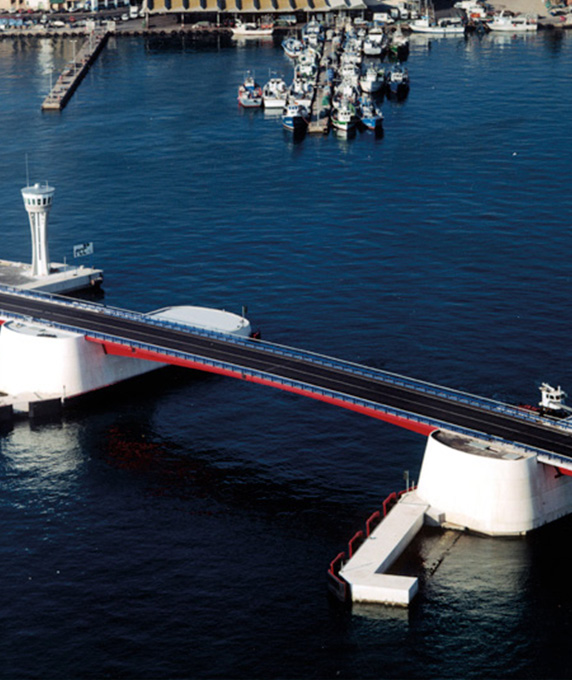
.jpg/97b9c0a6-a6d5-2f31-db41-fe610b059946?2.0)
